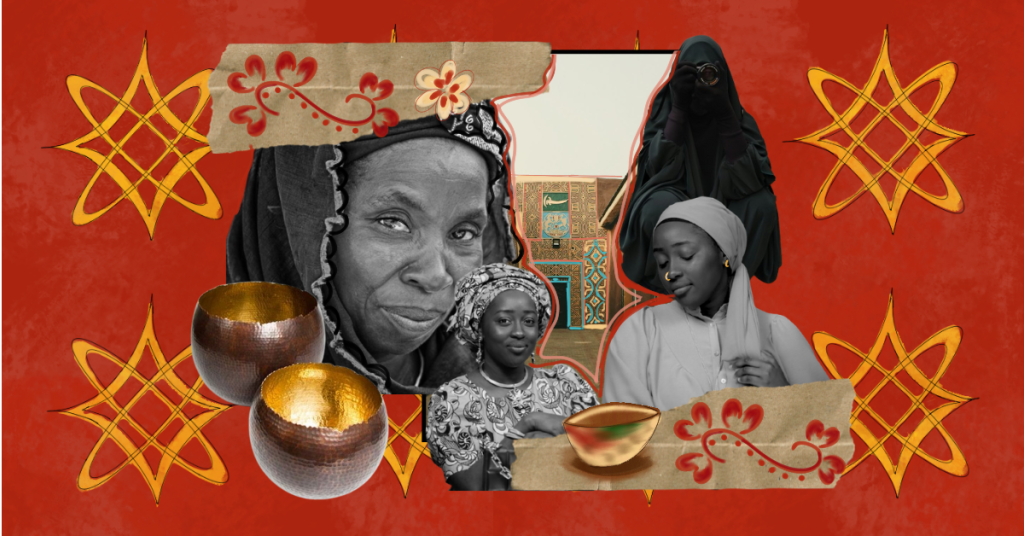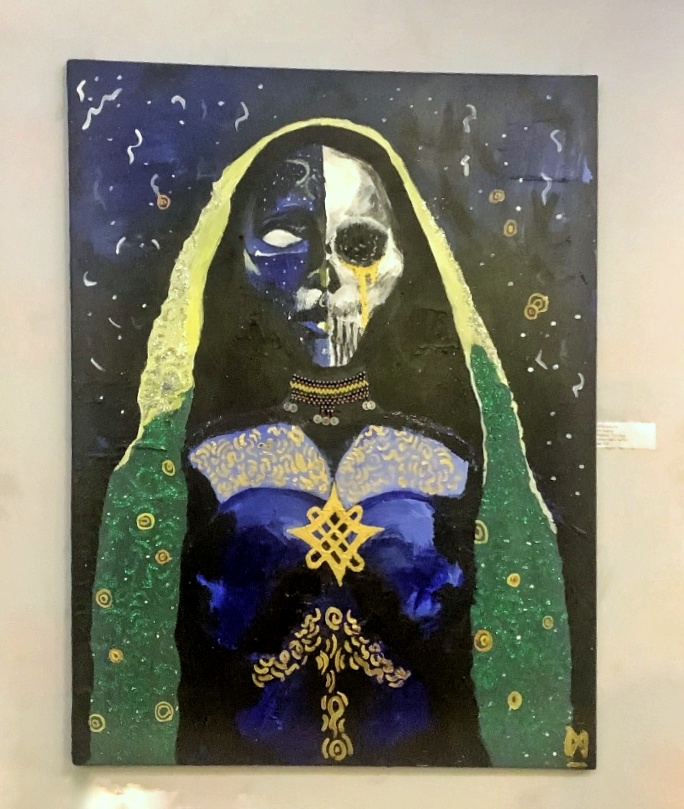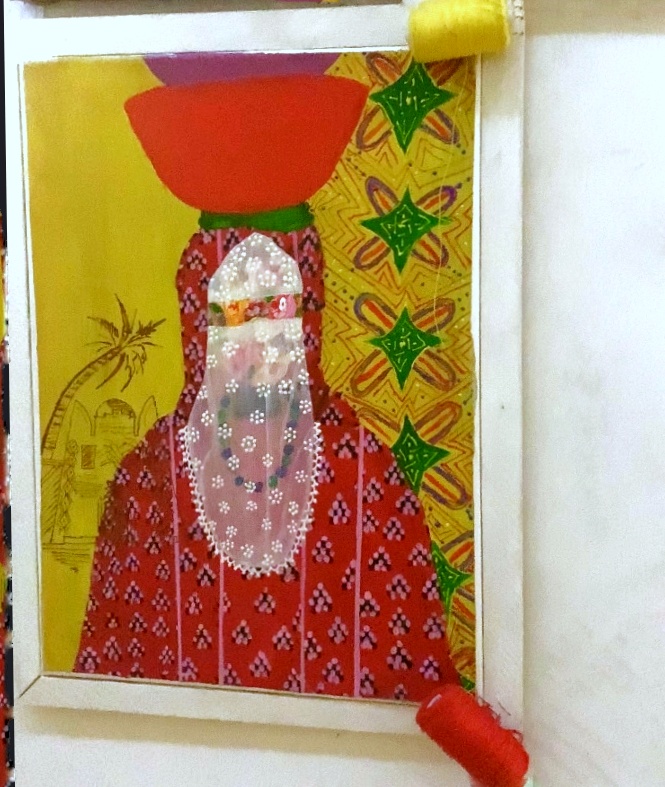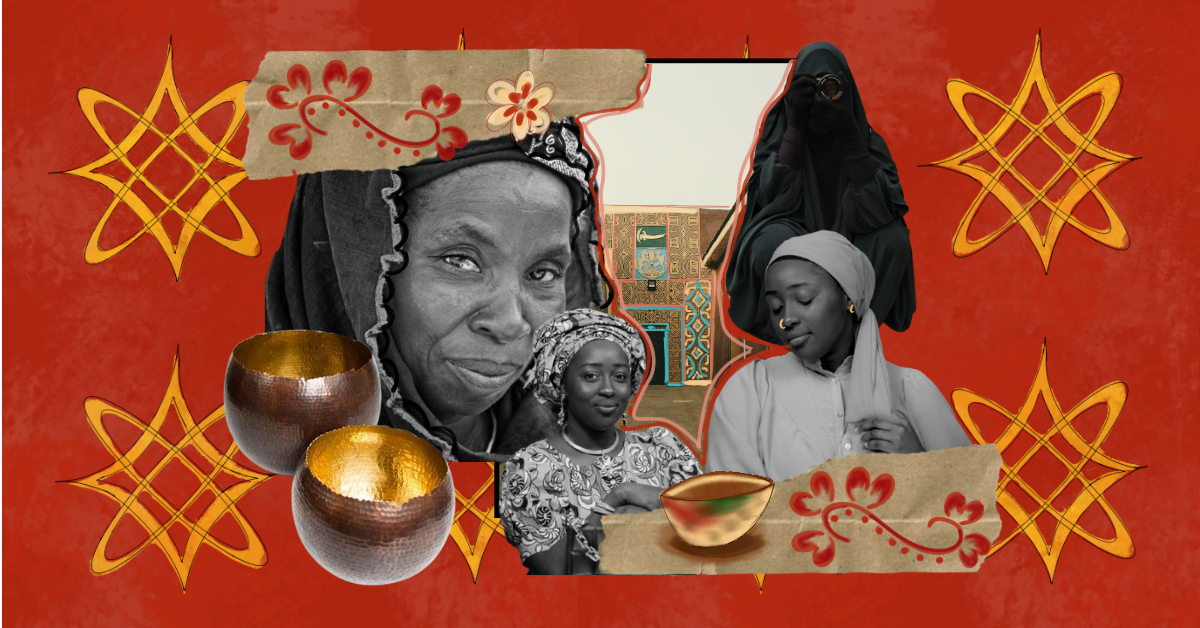
Shalom C Ikemba

Ancestral Energy by Aisha Mbaya
What does it mean to be a Northern Nigerian woman? To some, it is a source of pride, and to others, it feels like a box – a limitation that they want to break out of. In the creative space, being a Northern Nigerian woman often means being underrepresented, overlooked, and misunderstood, but the situation is starting to change. Northern women like Zaynab Musa, founder of Sixth Dimension and Aisha Kabiru Mohammed, journalist and founder of Naija Mosaic, are actively working to make a difference.
On the 11th of April, 2025, they organised and executed a creative exhibition titled: “Yar Arewa: Demystifying The Northern Nigerian Woman”, in collaboration with Institute De France to celebrate World Dance Day, and for once, the spotlight was not on the suffering or abuse of Northern Nigerian women, but on the power and beauty they carry. Their uniqueness was celebrated by visual artists, art enthusiasts, and art organisations at this event, which was a welcome change.
Aisha Kabiru explained that there is a gap in the coverage of Northern Nigerian female artists, recalling her experience working with Document Women, where she wrote the Arewa Voices column.
“It was a remote job, but most of the time I had to leave my home [to research] because there was no information about Northern Nigerian women on the Internet,” she said.
Most stories found on the Internet about Arewa women are one-sided, lacking nuance and depth. This is ironic because Northern Nigerian women have the deepest, most powerful stories, and have made important contributions to the Arewa arts and culture community through fashion designing, storytelling, painting, and much more.

Hafsat Sani, The Cicada
Women like Hafsat Sani, Founder and Creative Director of The Cicada, a fashion design initiative committed to promoting and preserving Northern Nigerian culture through the popular fabric Saqi, are part of these contributors. Saqi, a hand-woven loom fabric from the Northern part of Nigeria with pre-colonial origins, was once an everyday clothing item, but has become a garb for special occasions.
She said, “I saw what Deola Sagoe was doing with Aso-Oke, and I wanted to emulate that for us. I did extensive research in Kano and found that the looming of Saqi was an inherited trade passed on through generations, but the younger generation was not interested in it because they felt that it was time-consuming and didn’t pay well.”
The Cicada decided to use this as a means to empower Arewa women: “To see that heritage should not be hidden, but embraced and celebrated,” she explained.
Hafsat Sani’s initiative shows that cultural revival is possible because now, according to her, a large number of Arewa brides wear a Saqi outfit at their weddings.
As a Northern Nigerian woman, I have noticed that in mainstream media, like in many Nollywood films and television series, filmmakers and studios employ individuals unfamiliar with the depth and details of Northern women’s lives to represent them, portraying them in ways that make them seem “backwards.” The aversion to aligning with culture is a complex issue, which is as a result of our culture being misunderstood and misrepresented. That is where creatives come in – writers, artists, art organisations, art influencers, fashion designers – to rewrite our true beliefs and heritage on a new slate of representation.
An artist who unapologetically embraces the Yar Arewa label as a part of her identity is Maryam “MeeMee” Maigida, who attributes the prestige and honour she has gotten from her art to the values of Northern Nigeria. She wears her Arewa identity like a badge of honour, expressing her love for her identity through indigenous clothes.
“There’s so much in Northern Nigeria. So much value and so much to be proud of. We just don’t put in the effort to showcase it the way it’s meant to be,“ she opined.
Zainabu Malabu, Founder and Head Curator of Yonki, said that although the platforming of Northern Nigerian women in the creative space isn’t where it’s supposed to be, there is gradual progress. “We just don’t give it enough importance, and that is definitely changing with people who are giving it more relevance, giving Northern women confidence to pursue creativity,” she said.
The negative connotations exist, but as Northern women, it is imperative that we ensure that we are consciously making an effort to redefine them by embracing what it truly means to be Northern, especially when we are in spaces where we can educate others and share the beauty of our culture. There are many ways to express being Northern, whether through music, dressing, jewellery, dance, photography, or other forms of art. This expression is particularly important in making individual contributions towards this movement.
The end goal for the Yar Arewa exhibition was to secure sponsorships, recognition, scholarships, residency programs, and grants for female artists from Northern Nigeria. This exhibition selected the right theme and the right moment to highlight the fact that Northern Nigerian women have what it takes to be picked, to demand attention and command it, while recognising that they have the power and responsibility to choose themselves and ask for the spotlight that they deserve.

Sallabi be ndiyam “Veil and Water” by Zaynab Musa
Artists and creatives including Aisha Kabiru, Zaynab Musa, Aisha Mbaya, Maryam Maigida, Aisha Sambo (Shushi), Amina Ismaila (Ohizom), Lateefat Idris, Sefa Renee Charles, Hafsat Sani, Sinda Kwairanga, Hannah Pololis Chundusu, Awaisu Ummulkulthum (Diddi), Silifat Ozioma Abdulkareem (Ceeleepha), Zainab Idris Gidado, Fatima Ibrahim Safiyanu (Wear Naims), Karima Adamu, Rukayat Abimbola Sadiq, Timothy Ruth Afumat, came out of their shells and into the light with every brushstroke, every loom, every shot. We are now able to answer the question, “Who are the Arewa women in the creative space and what do they do?” The exhibition not only put us on the map, but shifted the one-sided notion of Northern Nigerian women – adding depth, colour, and most importantly, demystifying this group.



